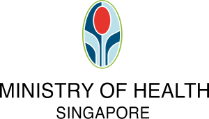What's the difference between Covid-19 quarantine order, health risk warning and health risk alert?

Published on
06 Sep 2021
Published by
The Straits Times
SINGAPORE - As part of measures to contain the spread of Covid-19, health risk warnings (HRWs) and health risk alerts (HRAs) will be issued to people whenever a new cluster is detected.
The Straits Times finds out the differences between HRWs, HRAs and quarantine orders.
1. Who is it issued to?
A quarantine order is given to people who have or are suspected to have Covid-19, or are a close contact of a Covid-19 case.
A health risk warning is issued to those who, based on SafeEntry data, have been in close proximity with a Covid-19 case for an extended period, or are identified as a close contact of a case.
Such people have a risk of infection that is lower than those who are issued a quarantine order, but higher than those who receive a health risk alert.
A health risk alert is sent to people whose SafeEntry records from the past 14 days overlap with those of a Covid-19 case.
This group of people is considered to have the lowest risk of infection out of the three, and may simply have been in the same mall at the same time as an infected person without interacting with them.
2. What should people do if they receive one of them?
Those who receive a quarantine order must follow the instructions provided, which will include isolating themselves either at a dedicated government quarantine facility, a hospital, or their home if it is suitable.
The exact location depends on the Ministry of Health's (MOH) assessment of their contact history, state of health, and suitability of their home.
Those under quarantine will typically be tested for the disease using a polymerase chain reaction (PCR) test at the start and end of their quarantine period.
The swab tests are arranged by appointments only, and are conducted at designated testing sites. Two-way transportation will be provided to and from the sites.
The Government will pay for tests taken while under quarantine order.
Those who receive an HRW need to get a PCR test at a designated testing centre.
They have to isolate themselves until their test result comes back negative.
Later, they will have to perform a self-test using an antigen rapid test (ART) kit seven days from their last exposure to the confirmed case.
Finally, they will need to take another PCR test at a designated testing centre 14 days from their last exposure to the confirmed case.
Those who get tested as a result of their HRW will have their tests fully paid for by the Government.
Meanwhile, those who receive an HRA simply need to monitor their health for 14 days.
While they are not required to get tested, they are encouraged to perform self-tests throughout the 14-day period using ART self-test kits.
Although they do not need to quarantine themselves, those who receive an HRW or HRA should reduce their social interactions.
3. Is it legally binding?
A quarantine order and an HRW are both legally binding under the Infectious Diseases Act.
Source: The Straits Times © Singapore Press Holdings Limited. Reproduced with permission.
ALL views, content, information and/or materials expressed / presented by any third party apart from Council For Third Age, belong strictly to such third party. Any such third party views, content, information and/or materials provided herein are for convenience and/or general information purposes only. Council For Third Age shall not be responsible nor liable for any injury, loss or damage whatsoever arising directly or indirectly howsoever in connection with or as a result of any person accessing or acting on any such views, content, information and/or materials. Such third party views, content, information and/or materials do not imply and shall not be construed as a representation, warranty, endorsement and/or verification by Council For Third Age in respect of such views, content, information and/or materials.







